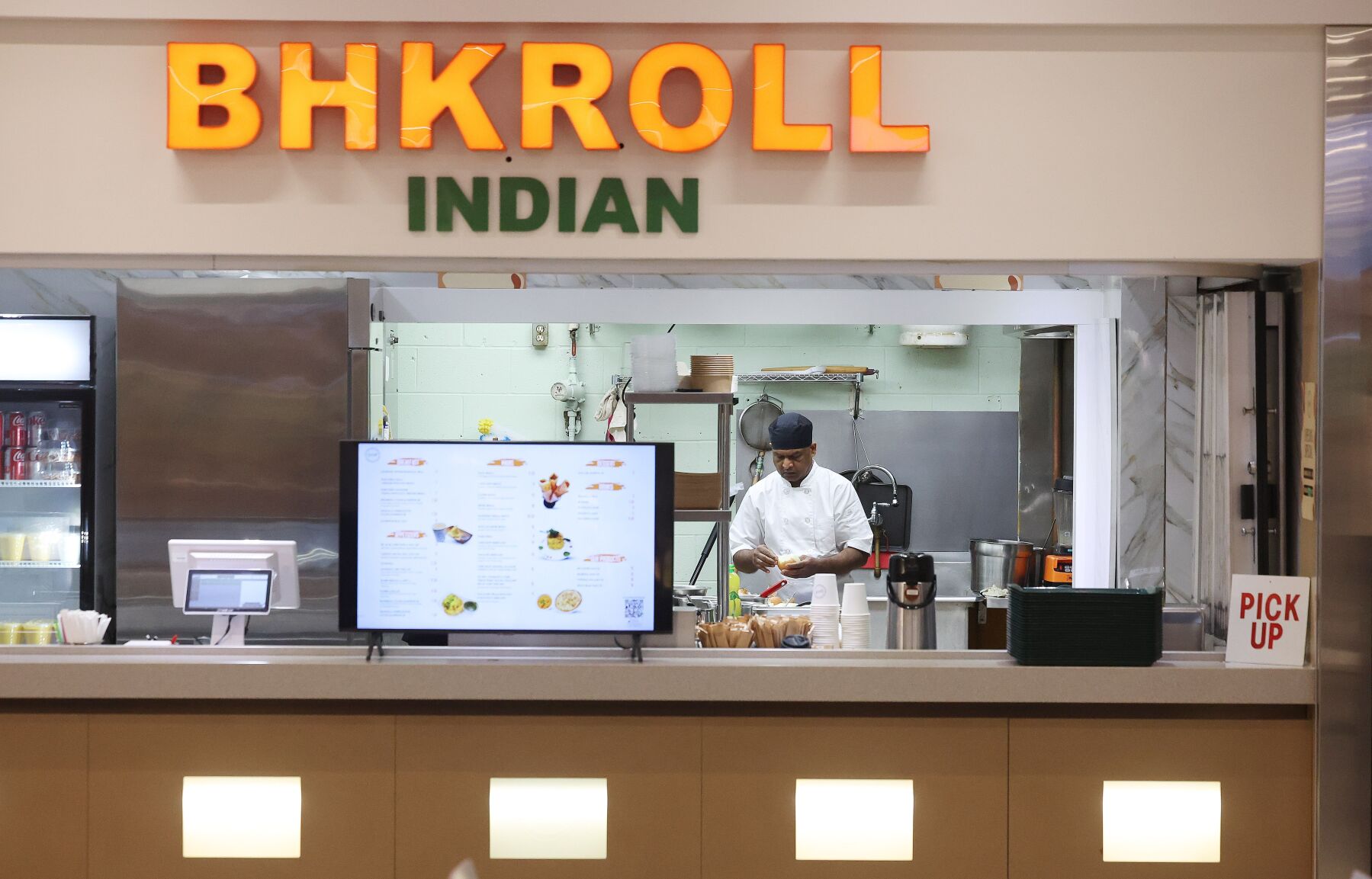may technically be a food court stall at College Park, but as soon as you approach the counter it’s clear it is far from the typical fast-food fare.
In the morning, in between serving commuters coming and going from College station cups of masala tea, the cooks are chopping onions and marinating hunks of chicken, beef and lamb in mint, garlic, black pepper and house-ground garam masala in preparation of lunch. There’s no microwave, heat lamp or steam trays. However, there is a dough mixer for making parathas during the lull between lunch and dinner. The centre table in the open kitchen is cleared and balls of dough are rolled and shaped by hand.
Heading the kitchen at the recently renovated lower level at College Park is chef Debu Saha, whom long-time foodies in the city have been following since the early 2000s. He first made a splash on the local dining scene for creating tasting menus at the now-shuttered Biryani House overlooking Wellesley station and Debu’s Nouvelle Indian Cuisine on Mount Pleasant that combined his French training with Indian heritage cooking. But back then it was a hard sell to most diners accustomed to Indian food being cheap above all. BHK is a month old, having opened on April 14, and Saha says he’s finally found his sweet spot.
“Running a restaurant is harder than (a food court stall). Here you have lower costs. The rent is high, but we have a simpler inventory. We don’t have to have thousands of dollars of wine, liquor and beer just sitting if people don’t come in,” says Saha. “There’s so much competition in fine dining now. Instead, let’s make something that everyone can afford.”
To him, opening a dining room just doesn’t make sense because many downtowners aren’t working out of an office five days a week, and the rising cost of food is on everyone’s mind. “Before the pandemic, people would go out every weekend but that’s gone now. Economics are the first thing on people’s mind. Let’s work with that.”

A Bombay Club Sandwich with coriander chutney.
Steve Russell º£½ÇÉçÇø¹ÙÍøStarEven with a menu that tops out at $15 — exquisite dishes like slow-cooked lamb trotters and chicken livers in parathas — and most dishes hovering in the $10 range (a trip to one of the global fast-food conglomerates costs just as much nowadays), eating here feels like you’re eating at one of Saha’s old restaurants, or a fancy outdoor food festival he’s participating in. An order of baked gulab jamun arrives garnished with orange segments and fresh mint. The Bombay Club Sandwich, a popular Indian street food, is a stellar grilled cheese packed with sliced cucumber and tomatoes, julienne carrots and beets, masala-seasoned potatoes, onions, crispy masala chaat and served with a coriander chutney to dip. The cheese is the individually wrapped American kind, but let’s be honest, it’s the cheese that yields the best gooey texture in a sandwich. The lamb kathi roll comes with juicy chunks of marinated meat with distinct pops of fresh ginger wrapped tightly around a crispy paratha. And for vegetarians, there’s a soy mock meat version.
“There’s no short cuts, no frozen parathas. I have to run it like a restaurant with fresh product. It’s what I know,” Saha says. “We don’t have a wall dividing the kitchen and the counter, so that you can see our process. We’re not just opening a packet and serving it.”

The barely month-old BHK stall in the College Park food court serves kathi rolls, biryanis, Indian sandwiches and salads.Â
Steve Russell º£½ÇÉçÇø¹ÙÍøStarHe opted to not have the ubiquitous butter chicken on the menu, even if it’s a sure-fire crowd-pleaser. “We sell the butter sauce for people to take home, along with korma and vindaloo sauces, and balchão (a sauce used in Goan prawn dish). But butter chicken is everywhere, along with the same saag paneer and chicken tikka masala. We want to bring something nobody else is doing.”
An example is the lamb trotters slow cooked with yellow peas fragrant with roasted cumin, fresh ginger and green chilis. It’s a dish he doesn’t compromise on by removing the bones — part of the fun is sucking the sauce from the bones — or scaling back on the heat. Consider ordering a lassi with this. “If you go to India or Pakistan, people eat it in the morning before work because it’s a heavy dish that’ll take you to the afternoon,” he says.Â

Stewed lamb trotters with yellow peas, fried egg and house-made paratha at BHK.Â
Steve Russell º£½ÇÉçÇø¹ÙÍøStarOn the weekend, the stall does brunch, such as a dessert kathi roll with carrot halwa, dried fruit, brie and gulab jamun.
It’s an unusual set-up to plop a sit-down restaurant kitchen into the confines of a mall food court. It’s a formula that Saha knows isn’t easily replicated and he has no plans on turning it into a franchise. “That’s completely wrong for me. The whole thing would fail,” he says. “Most people won’t have the patience to do what we do here.”
Even if it’s in a new setting, it’s impossible to undo the chef’s previous experience of cooking at luxury hotels and running white tablecloth restaurants.Â
“Some of my old customers asked if I’d do a tasting menu. We can do a lamb biryani baked in phyllo, a paneer cheesecake, a gulab jamun tarte tatin,” says Saha, listing off ideas that have clearly been simmering in his mind. “A tasting menu, the first of its kind in a food court! We’ll serve mocktails!” he says with a laugh. “I do miss the fancy cooking and presentation, but maybe we can bring it to the food court.”






























To join the conversation set a first and last name in your user profile.
Sign in or register for free to join the Conversation